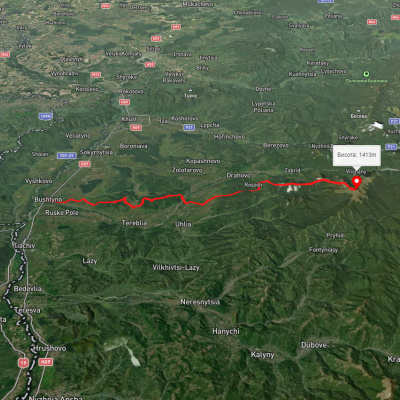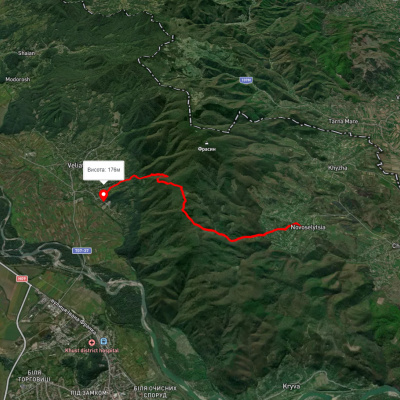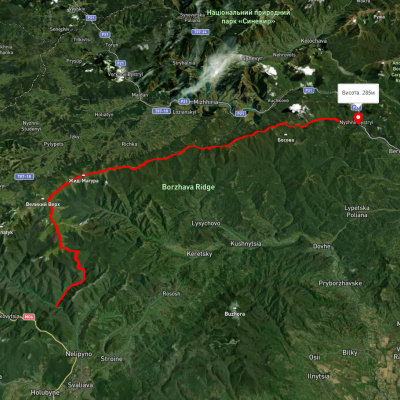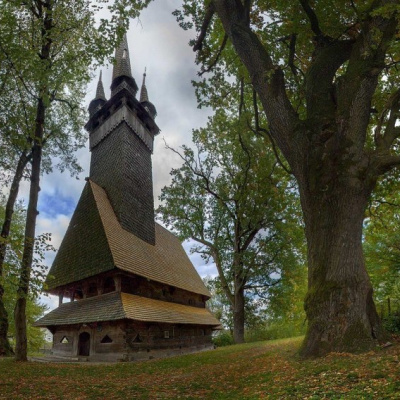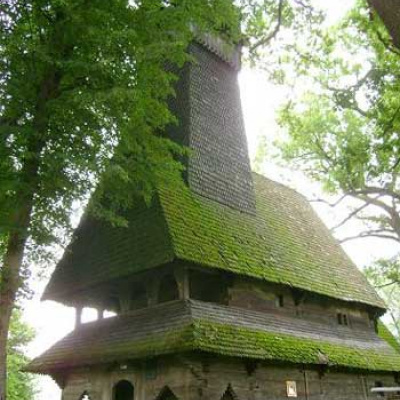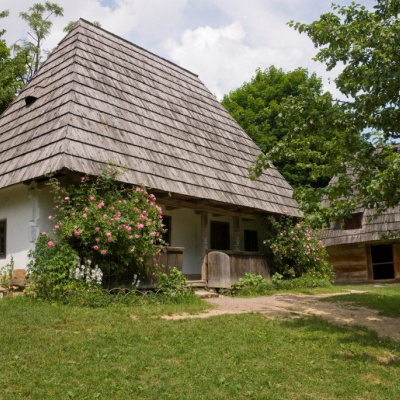Kraynikovo
Kraynikovo village is a small village in Khust district. It is located in the center of the plain between the villages: Sokyrnytsia, Steblivka, Danylovo, Novobarevo. It is located in the southeastern direction from the district center of Khust.
The village is over 400 years old. The first inhabitants lived in the "Vovchyi Potik" tract. According to legend, the first resident of the village was Kraynik. In this tract, people were often attacked by wolves, and the village moved to another place under the Kosyovyi Sad tract, which is located 2.5 km from the modern village. The first church was built there. Old-timers of the village say that it was built according to the plans of one of the Solon monks who came to the area. And that young craftsmen from neighboring Vonihiv and Tereblya worked on it. The village was named Tserkyshche. It was located on a mountain and had a hard time with water. And there was also a measles epidemic. People burned everything, including cattle. After that, they moved down. There were 700 inhabitants in that village at that time. The village was called Migalko-folu (probably, Mykhailo was the first one to move).
The place where the village was located was a long forest, with swamps all around. In the forest there was a well called "Sea Eye" - a healing spring. Near the well, oak trees were cut down and a church was built from them. Almost the entire village drew water from the well. Two "shafts" were hollowed out of the oaks. Water was constantly flowing in them, and the villagers watered their cattle there. People passing through from neighboring villages also watered their horses and oxen here in winter and summer, because the spring is close to the road, and the water in it is warm in winter and cold in summer. According to old-timers, the water from the well has healing properties. The uniqueness of this spring is also in its high flow rate and mineralization. The water is hydro-chloride sodium and calcium. Trace elements: manganese, silicon dioxide. For treatment of digestive system diseases. A powerful aquifer produces healing water in two other places nearby, at a distance of 100 meters. Behind the village, from the side of Novobarev, there is a river 3-3.5 meters wide, where the well "Sea Eye" probably originates (according to Ivan Chepkanych, a geological engineer and resident of Kraynikovo village, born in 1939).
According to old-timers, the modern name of the village comes from the name of the first resident. Three brothers went in different directions from the spring: Danylo, Shandor, and Kraynik. Krainiak cleared the oaks and built the first house for himself.
Another version is from the last house, which was in the direction of Novobarev. There was an oak forest in this part of the village. People from Khust used to walk towards Novobariv by road. They were afraid of wolves and said: "If we get to the last house, then we won't be afraid." That's why they called this place Kraina, and later Kraynikovo.
Thepride of the villagers is the wooden St. Michael's Church and the bell tower, which were built in 1668 without a single nail, all on chops, one of the oldest in the area and one of the most original religious buildings in the region. The church is 25 meters high and 14 meters long. The year of construction is indicated by an inscription on the narthex (Babynets).
The temple, which is more than 300 years old, has survived to this day, although no one has cared for it for almost half a century. According to priest Mykhailo Kish, the wooden church was a passage yard from 1947 until 1999. A few years ago, they managed to cover part of the roof. There are plans to continue these works. The church is being preserved with all their might. But for more extensive work, funding is needed.
Які туристичні (пішохідні) маршрути проходять через/біля Kraynikovo?
Пропонуємо пройти такі туристичні (пішохідні) маршрути через/біля Kraynikovo: смт. Буштино, через ур. Занівка до г. Манчул, Шлях Пинті, с. Вовчий, через г. Стій, г. Жид-Магура, пер. Присліп, Полонину Кук, г. Коритище, с. Широке до с. Нижній Бистрий, с. Скотарське, через пол. Боржава, пол. Палений Грунь до с. Нижній Бистрий, с. Скотарське, через пол. Боржава, пол. Палений Грунь до вдсх. Вільшанське, Карпатський туристичний шлях
